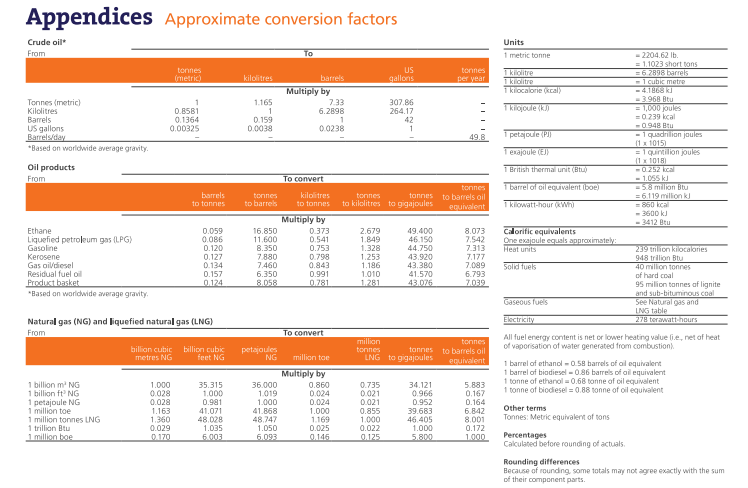UPDATED 1 Sept: The EI library in London is temporarily closed to the public, as a precautionary measure in light of the ongoing COVID-19 situation. The Knowledge Service will still be answering email queries via email , or via live chats during working hours (09:15-17:00 GMT). Our e-library is always open for members here: eLibrary , for full-text access to over 200 e-books and millions of articles. Thank you for your patience.
The A to Z of the Energy Transition: K is for kilo Watt, kilo Watt hours and other units of power and energy!

A slightly different topic for this edition - rather than focusing on a technology or energy theme, I hoped some might find a short explainer on units of energy and power helpful.
For those of you familiar with all of this, I suggest you re-join next time to find out what L is for.
So it’s perhaps worth getting back to basis and some high school physics. The SI (Système international d'unités) unit for energy is the Joule (J) named after English physicist James Prescott Joule. 1 J is the energy utilised when a force of 1 Newton moves a mass by 1 m. In electrical terms it is also the energy transferred to heat when a current of 1 Amp(ere) is passed across an electrical resistance of 1 Ohm (the SI unit for resistance). And in heating terms, to heat 1 ml of water by 1 degree requires 4.2 J, which uncoincidentally is equivalent to 1 Calorie, the imperial unit for energy. That’s the last time I’ll refer to Calories or any other imperial measures (sorry to my US readers!).
Where confusion some times is understanding the difference between energy and power.
Power is the rate of energy transfer per unit of time (i.e., Joules per second) and under SI units is measured by the Watt (W), named after Scottish mechanical engineer James Watt.
• 1 W is equivalent to 1 J per second.
• Energy (Joules) = Power (Watts) x Time
• Power = Energy / Time
In simple terms, think of Joules as the volume of energy stored, for example in a tank, and Watts as the rate that energy can pass through a pipe (or cable).
To make life more confusing we typically measure electrical energy in Watt hours or kilo Watt hours (kWh) – a unit of energy. Your electricity bill will nearly always be measured in kWh. 1 kWh is simply the energy used when a power of 1 kW is used for a whole hour. To convert this into Joules:
• Multiply power x [60 minutes x 60 (3600) seconds], so:
• 1 kWh = 3600 kJ or 3.6 MJ
Many an energy commentator has come unstuck in mixing their kW with their kWh over, say a wind farm’s generating capacity (kW or MW) versus how much energy it generates over a year (kWh or MWh). For example, a 10 MW offshore wind turbine might generate around 44, 000 MWh per year.
And of course this really matters when describing forms of electrical storage, such as battery storage or pumped hydro. The Watts or kilo Watts denote the maximum power, or rate of energy transfer, the Watt hours, or kilo Watt hours denote the total stored energy. Both of these factors matter.
Watts, Kilo Watts, Mega Watts, Giga Watts and more!
The scale of power and energy ranges enormously between a phone charger, measured in Watts, a kettle measured in kilo Watts, a wind turbine measured in Mega Watts and nuclear plant measured in Giga Watts). As a quick ready-reckoner here are the conversions:
• 1,000 W = 1 kW (I don't know why the k is lower case rather than uppercase - can anyone help explain?)
• 1,000,000 W = 1000 kW = 1 MW (Mega Watt)
• 1,000,000,000 W = 1,000,000 kW = 1000 MW = 1GW (Giga Watt)
• 1,000,000,000,000 W = 1,000,000,000 kW = 1000,000 MW = 1000 GW (Giga Watt) = 1 TW (Terra Watt)
Measuring fossil fuels
To add to the complexity of measuring energy, fossil fuels each have their own units! Coal is typically measured in tonnes (a unit of weight rather than energy), oil in barrels (a unit of volume, one barrel = 159 litres) and gas, just to be particularly complicated is measured by a volume, weight and energy:
• By volume: mmscf (million standard cubic feet) or BCM (billion cubic metres) - sorry I was wrong above, I can't avoid imperial units!
• By weight (or technically mass): Mt (millions of tonnes) (typically used for LNG) - often used as an annual measure MTpa
• And by energy: BTU (British Thermal Units) - 1 BTU is approximately equal to 1,055 kJ - this measure isn't just used in Britain, but also the US and many other places
• And finally, just for fun (!), gas is often turned into he equivalent of a barrel of oil as BOE (barrel of oil equivalent!).
I won't go through all the various and complex conversion factors, as these are conveniently set out in an appendix of the Energy Institute Statistical Review of World Energy (see picture below) and if you really want to learn more please look at the full details here: https://www.energyinst.org/__data/assets/pdf_file/0003/1055541/Methodology.pdf 
Appendix of conversion factors - source: Energy Institute Statistical Review of World Energy
To make life a lot simpler the Energy Institute, and others who publish energy data, typically convert everything in to the same units of energy - either as EJ (Exa Joules) or TWh (Terra Watt hours). And in case you're wondering what an Exa Joule is, it has 18 zeros:
• 1 EJ = 1,000,000,000,000,000,000 J!
And according to the Energy Institute Statistical Review of World Energy, the world consumed 620 EJ of primary energy in 2023. I'll be writing more on the different definitions around primary, secondary and useful energy later in the alphabet.
We'll be publishing this year's Statistical Review on 26 June - please sign up to watch online: Statistical Review of World Energy 2025 - online global launch webcast 
Flyer for 2025 Statistical Review of World Energy
A bit of a geeky explainer this week but I hope of use to some of my readers. Let me know what you think in the comments and of course delighted to hear about further energy-related measures - a bushel of wood, a gallon of whale oil etc?
Further reading
And as always, a couple of relevant articles from the Energy Institute's New Energy World magazine.
The state of high-speed charging for heavy vehicles - How vehicle charging works in practice, with reference to a super-fast MW-rate charging system
Shining a light on solar capacity factors - Why a 100kWp solar panel rarely produces 100kW
Online Resource details
Websites:
Link to LinkedIn post
Keywords: A-Z energy transition
Subjects: Measurement, testing and control
